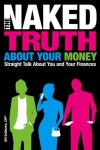President Biden has just signed the 2021Covid Relief Package authorizing the borrowing of $1.9 Trillion dollars. This is on top of the 2020 relief packages that totaled $3.41 Trillion dollars. Combined we will have borrowed $5.31 Trillion dollars to support individuals, businesses and the economy during the COVID pandemic. The U S GDP for 2019 was approximately $21 trillion. And Congress has already turned their sights to more stimulus, this time for an infrastructure bill. Since this was also on President Trump’s agenda, it is likely to get bi-partisan support. Throw in another trillion of debt. This is like adding the entire Japanese economy to ours for one year!
What’s the Point?
I can’t disagree with Government reliey during the COVID crisis. In 2020 our economy crashed. Below is a graph from EconPi that graphs multiple economic statistics on a monthy basis. I’ve shown these several times. You can click the link for a quick explanation, or to view more graphs.
Below is the graph from December 2019. The Green LD (Leading Indicators) is still solidly in the Expansion Quadrant. The Red MoC (Mean of Coordinates) is slightly in the decline quadrant, but the actual readings are well above the baseline. Meaning the economy may be slowing, but from extremely strong position to a merely very strong position.
Here is what happened from COVID.
The economy had crashed by the end of May. We were clearly in a recession. A truly boom to bust scenario. Government action was required and necessary.
Here we are today.
We have an economy that is clearly on the mend. Leading indicators are clearly in the recovery quad, and current (MoC) Indicators are into the expansion quad. Lagging indicators are Hires – although we just had great employment numbers as restaurant and entertainment workers are beginning to be rehired. Small business optimism is negative. Not surprising with talk of a $15/hour minimum wage as many businesses are still suffering from COVID related losses.
Why Does it Matter?
The money spent for COVID relief last year worked. The economy is clearing improving and looks to re-establish itself nicely in the Expansion Quad as the economy opens and vaccines encourage more people to fully participate in the recovery. But adding an amount of money equal to 10% of GDP during an economic recovery is unprecedented. In 2020 it was pouring gasoline on wood to start a fire, today we are pouring gasoline on a blazing fire. That doesn’t always end so well.
I’m not saying that some stimulus would be bad, continuation of the PPP loan program for small business and continued unemployment checks .But $1400 per family member for households with incomes up to $160,000 a year, with no evidence that they were affected by the pandemic?
There is a mentality that once the government implements a stimulus package, and the money is spent, it is gone, like it never happened. Money doesn’t go away. It is cumulative. It continues to circulate. This will just accelerate the wealth gap. Money is plentiful. There are literally tens of trillions of it sloshing around. It is everywhere.
More than 25% of all money in existence was printed in the last year.
The question becomes, what does this do to the economy? A little bit of a boom will feel good right now. But too much of a good thing can also accelerate the timing of the next bust.
Mr. DeShurko is the Managing Member of 401 Advisor, LLC an independent registered investment advisor. Jim Kilgore CFP ® is an Investment Advisor Representative of 401 Advisor, LLC. They are also registered representatives of Ceros Financial Services, Inc. (Member FINRA/SIPC). Ceros is not affiliated with 401 Advisor. The views expressed are those of Mr. DeShurko and do not necessarily reflect those of Ceros Financial Services, Inc., its employees or affiliates.
Past performance does not guarantee future results. There is no guarantee that any investment or strategy will generate a profit or prevent a loss.








